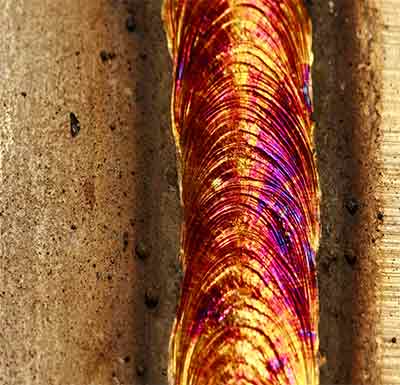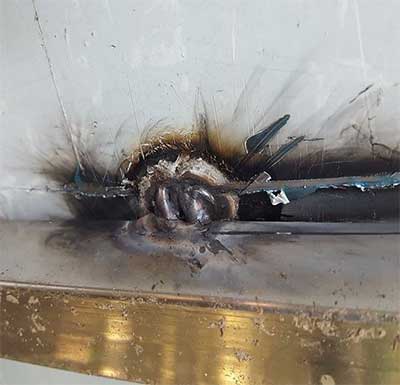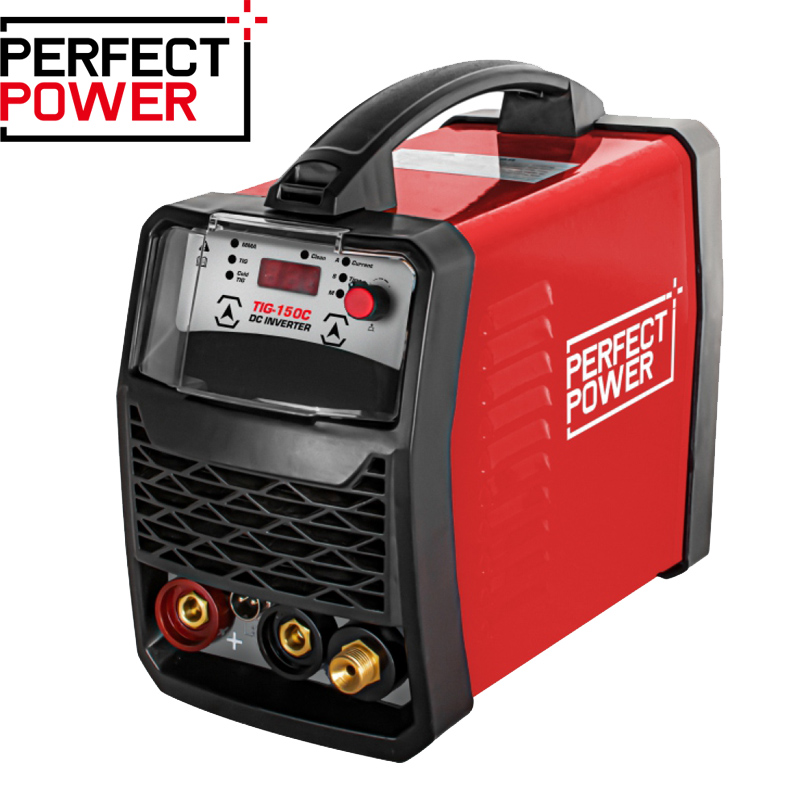Intro about Mig Welder Troubleshooting:
Just like all welding processes, MIG welding has its own complications. Now, you shouldn’t let common problems slow down your welding process. With a sound knowledge of some troubleshooting skills, you can find the right solution to your welding problems. This article covers in detail, the mig welder Troubleshooting for the operators.
Some common/Basic problems:
The machine doesn’t start:
- Cause: When a MIG welder machine doesn’t start, it can be due to a lot of reasons. Some common causes may be a dead power circuit, a blown-up fuse or simply a wrong voltage input. It could also be as a result of overloading.
- Solution: If your machine does not start, first, make sure that it is switched on. If yes, check for the possible cause of the problem and fix it. The voltage input should be checked to ensure that it complies with the manual and avoid overloading. If it is overloading, it’s best you let the device cool off for some time. You can also replace the fuse if it is blown.
Welding machine starter works but blows fuse:
- Cause: When you turn on the switch and the starter works but the fuse suddenly blows, it may be either as a result of a short circuit in the connection or the fuse might be too small for the machine.
- Solutions: Check the connections and correct any short circuit. If the fuse is too small, it should be replaced with a bigger one.
Polarity switch Stop working:
- Cause: If the polarity switch stops working, it may be that the switch is worn out or maybe due to the use of the switch when the welder is under load.
- Solutions: A worn-out switch should be replaced. Also, ensure that you do not use the polarity switch when the welder is under load.
Excess heats up Electrode holder:
- Cause: If the electrode holder heats up, there might be a loose connection or an inappropriate duty cycle of the electrode holder.
- Solutions: Tighten any loose connections and in the case of an inappropriate duty cycle, then the electric holder should be replaced with the appropriate size.
Electrical shocks Occur while touching the welder:
- Cause: Electrical shocks on welder may occur if the frame of the welding machine is not properly grounded.
- Solutions: In case of electrical shocks, you must read the user manual; follow all the instructions about the grounding procedure of the frame. If the frame is grounded properly, you will not experience electrical shocks.
Overheating of Welding cable:
- Cause: If the welding cable gets heated really fast, it could be as a result of incorrect cable size or inappropriate duty cycle.
- Solutions: Replace the cable with the appropriate size stated on the user manual.
Bad ground clamp:
- Cause: The ground clamp may turn bad and begin to malfunction. In most cases, this happens when the machine gets coated with oxides which may alter the flow of current and create high resistance on the machine.
- Solutions: Ensure you check and clean your ground clamp regularly to avoid any build-up of oxides and prevent resistance of the machine.
Damaged cable:
- Cause: Cables can get damaged after prolonged use.
- Solutions: if you notice any sign of damage on the cable, it should be replaced immediately. Damaged cables can lead to several problems and can also affect the quality of your work.
Welding machine doesn’t switch off:
- Cause: If you switch off your machine and the MIG welder doesn’t go off until you cut off the power supply, it simply means your line switch is worn out.
- Solutions: The line switch and connection should be repaired or possibly, replaced.
Welding defects:
If you notice welding defects, it means that some parts of the MIG welder itself have malfunctioned and such parts should be adjusted and repaired. Below are some common welding defects including their possible causes and solutions.
Improper wire feeding:
- Cause: A very common welding defect may be a result of improper wire feeding which is caused by a worn-out drive roller.
- Solutions: Periodically remove the drive rolls and clean with a wire brush to remove any dirt on the liner that may affect the pressure and grip it would have on the wire. Also, inspect the drive rolls for wear, and replace if worn-out.
Low welding:
- Cause: Low welding defects occur when the tip of the welding gun is worn-out. When this happens, the welding will not be properly done.
- Solutions: Replace the tip of the welding gun immediately as this might result in other problems.
Porosity:
- Cause: Porosity may occur on the surface as a result of inadequate gas flow or bad wiring. It is a very common welding defect.
- Solutions: Check the gas line and clear out any obstruction. Also, the gas nuzzle should be plugged in correctly to avoid leakage. Ensure that you check and adjust the wire connections properly.
Shrinkage Cracks on the weld:
- Cause: If you notice shrinkage cracks on your weld, the bead may be too small and concave or the wire is rusty.
- Solutions: Make sure that the beads are of adequate size. Clean the wire to be welded properly. Ensure that you do not leave any dirty or rusted area where the welding is to be done.
Lateral cracks on the weld:
- Cause: If you notice lateral cracks on your weld, it may be due to fast welding speeds or very low current and a high voltage of arc.
- Solutions: Lateral cracks can be avoided by maintaining a steady welding speed and avoid welding too fast. The current flow and arc voltage must also be steady.
Excess spatter:
- Cause: Excess spatter is a very common welding defect and is caused by either excess CO2, high voltage or as a result of inappropriate impedance.
- Solutions: Excess CO2 can be heated up using a gas heater. Excess spatter can also be avoided by applying the correct voltage.
Advanced welding problems:
1. Weld Metal Porosity:
Porosity Problem #1:
- Improper Surface Conditions: A contaminated surface (with rust, oil, grease, etc.), laminated surface or incorrect surface treatments may lead to weld metal porosity. Also, any surface that is open to atmospheric air can be contaminated. Incorrect surface treatments such as zinc coating or galvanizing may lead to porosity problems on your weld.
- Solution: The remedy for the contaminated surface is to clean the material following specified surface preparation procedures. Ensure that the weld joint is protected from air crevices to prevent contamination. Also, when welding a laminated workpiece, ensure that you prepare an un-laminated parent metal to conduct a quality weld procedure.

Porosity Problem #2:
- Gas Coverage: Inconsistent gas shield may also lead to porosity problems. The shielding gas is supposed to protect the weld puddle from the air and at the same time act as its stabilizer. Porosity occurs when the shielding gas is altered and air contaminates the weld puddle.
- Solution: First of all, check the gas hose attachment with the equipment and remove hose contamination, if there is any. If the connection is correct, there will be no loss of gas shield and no air entrapment. Also, use the appropriate amount of shielding gas stated in the user manual and ensure that the shielding gas flow is set properly.
Porosity Problem#3:
- Base Metal Properties: Another common cause of porosity is the chemical properties of the metal. A common example is when your backing bar material does not match the metal you are welding.
- Solution: If your porosity problem is as a result of the base metal properties, the remedies may vary. If you are using a backing bar, for instance, you should ensure that it is made of the same metal you are welding.
2. Improper Weld Bead Profile:
Improper Bead Problem #1:
- Insufficient Heat Inputs: Insufficient heat inputs may lead to improper weld bead. If the bead appears to be ropy or convex, it is an indication that the setting being used is too cold for the width or thickness of the welded material.
- Solution: First, determine whether the amperage is ideal for the thickness of the material you want to weld. If the amperage is high, enough, check the voltage. It may be that the voltage is too low and this may lead to other problems. A good way to test if the voltage is set properly is by listening to the arc sound. A cracking sound, steady hiss or a loud sound are as a result of high amperage, high voltage or low voltage. At normal amperage and voltage, the arc should have a steady buzz.

Improper Bead Problem #2:
- Technique: Using an improper welding technique may also lead to a concave or convex-shaped bead.
- Solution: For best results in the bead profile, a push angle of 5 to 10 degrees is recommended.
Improper Bead Problem #3:
- Inadequate Work Cable: When the work cable in inadequate, it can result in inadequate voltage at the arc. Inadequate work cable can lead to improper bead shape.
- Solution: When work cables are too small or worn out, they tend to overheat. Such cables should be replaced with the appropriate size and length based on the current being used. For instance, a high current and long distance will require a large cable.
3. Lack of Fusion:
Lack of Fusion Problem:
- Cold Lapping in the Short Arc Transfer Process: Lack of fusion may occur as a result of cold lapping in the short arc transfer process. In this process, the wire directly touches the weld pool and the end of the wire melts and detaches a droplet as a result of a short circuit in the system. Fusion problem occurs when the metal in the weld pool melts but there is not enough energy left to fuse it to the main plate. However, it is difficult to detect a lack of fusion visually, unless through a bend or ultrasonic testing.
- Solution: First, ensure that you set the amperage and voltage correctly. If the problem persists, you may need to change the welding technique. The spray-arc transfer method is highly recommended.

